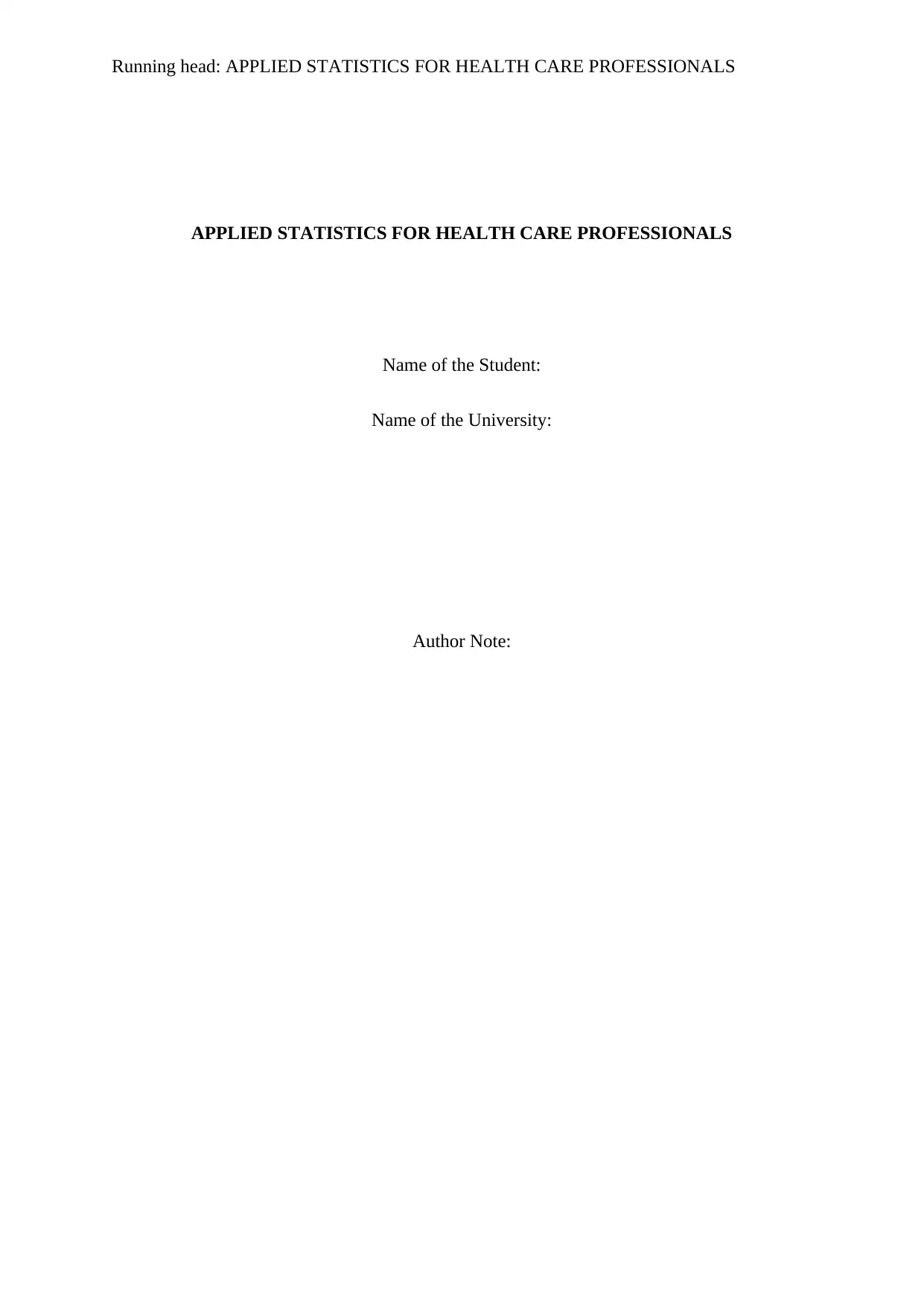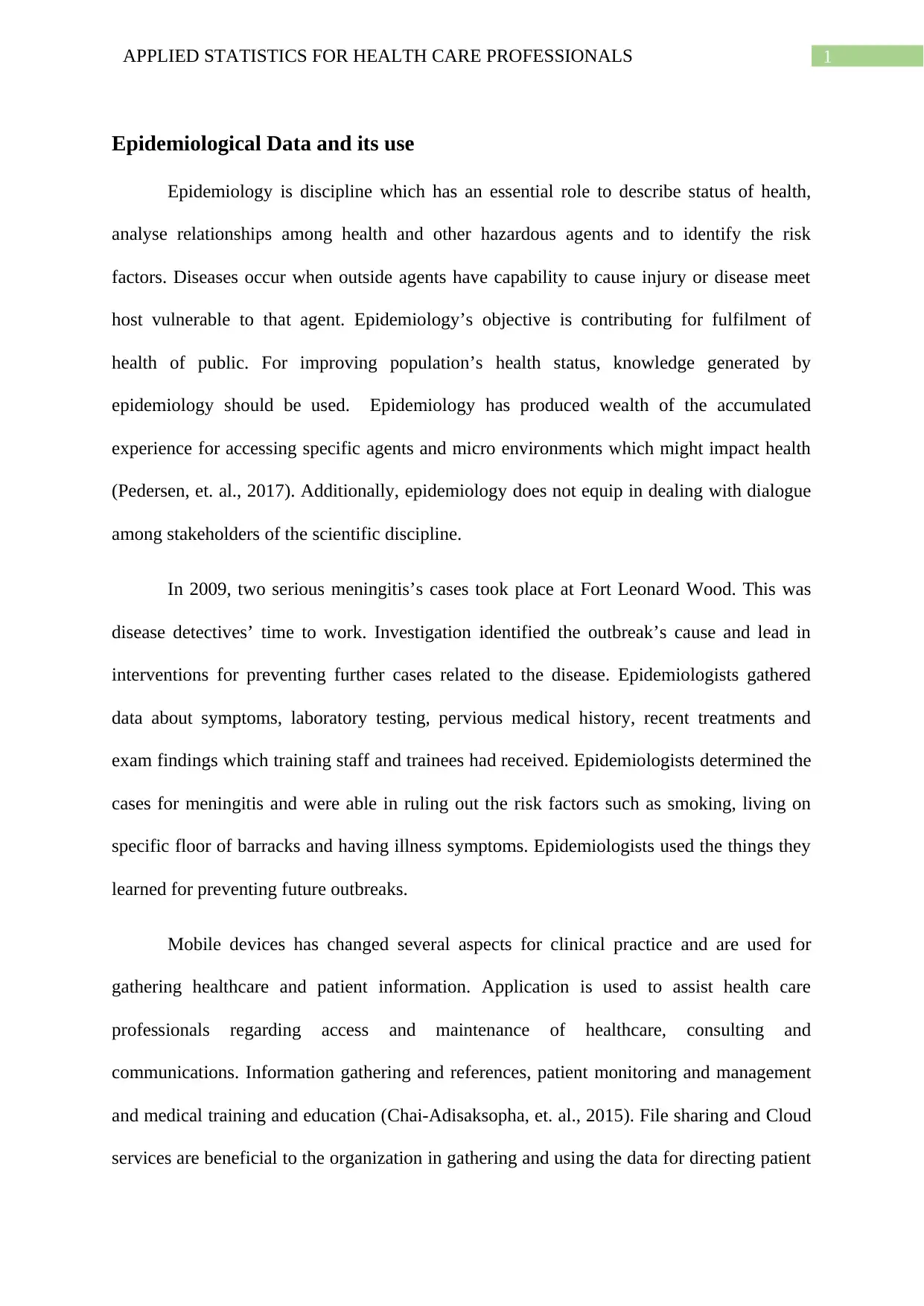University Report: Applied Statistics for Healthcare Professionals
VerifiedAdded on 2022/09/11
|4
|511
|31
Report
AI Summary
This report focuses on the application of statistics in healthcare, specifically addressing the use of epidemiological data. It begins by defining epidemiology and its role in understanding and improving public health, emphasizing the importance of data in identifying risk factors and disease patterns. The report then examines a case study involving a meningitis outbreak, illustrating how epidemiologists gather and analyze data to determine causes and implement preventative measures. Furthermore, it explores the impact of mobile devices and cloud services in healthcare, highlighting their roles in data collection, patient monitoring, and clinical practice. The report also references the use of data in diagnosing and treating patients, underscoring how technology and data analysis can enhance patient care and overall healthcare outcomes. References to supporting literature are included to provide context to the subject matter.
1 out of 4











![[object Object]](/_next/static/media/star-bottom.7253800d.svg)